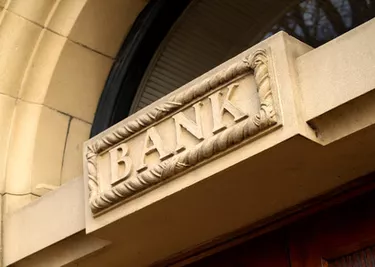
Though commercial banks and investment houses are both generically referred to as "banks," their roles are very different. At one point in U.S. history, the two types of banks weren't allowed to co-exist in one company, though that has since changed.
Definition of Commercial Bank
Video of the Day
Commercial banks are what the vast majority of people think of when it comes to banking. These are the branches that you see at nearly every major intersection. Commercial banks take in deposits and open checking, savings and money market accounts for their customers. They make loans to individuals and small businesses and are spread out all across the United States. Wells Fargo and Bank of America are among the leading commercial banks in the United States.
Video of the Day
Definition of Investment House
An investment house, or investment bank, works primarily for corporations and governments. These banks help raise money for their clients through debt and stock offerings. They also advise companies on mergers and acquisitions, and help bring prospective buyers together with sellers. Investment banks provide advisory services to investors, but primarily to larger institutional customers such as pension and mutual funds. U.S. investment banks are primarily in New York City, with Goldman Sachs, J.P. Morgan and Morgan Stanley on top of the heap.
Glass-Steagall Act
In the midst of the Great Depression, Congress passed the Glass-Steagall Act to prevent the type of banking crises that had helped cause the economic collapse. Also called the Banking Act of 1933, Glass-Steagall mandated that commercial banks and investment houses must be separate entities. Congress believed that commercial banks were making bad decisions to support their investment banking operations, and that it was better to keep the two functions separate.
Gramm-Leach-Bliley Act
The Gramm-Leach-Bliley Act, which is also called the Financial Services Modernization Act of 1999, repealed the Glass-Steagall Act. Banks were again allowed to have commercial, investment and insurance operations under one roof. This led to banking consolidation, and some say this was one of the key acts that led to the U.S. financial crisis of 2008.
Investment Banks Disappear
The 2008 crisis in many ways marked the death of investment banking as it was formerly known. To survive, all the leading investment banks became bank holding companies and took in customer deposits to give them a stable funding source. As a result they agreed to the same type of FDIC oversight that commercial banks have had since the 1930s. Though investment banks such as Goldman Sachs still have the same purpose as they did before, they face much more regulation than in the past, with more possibly to come.